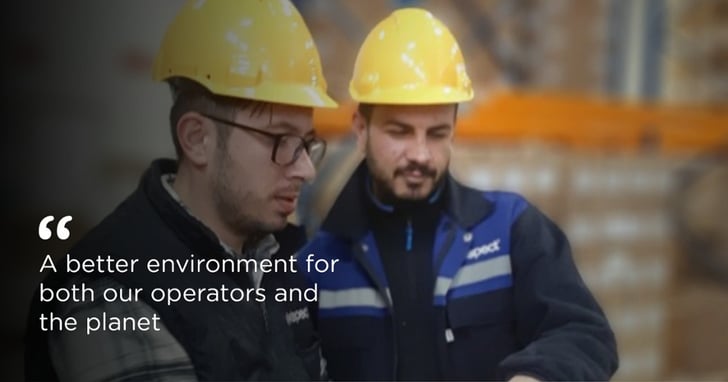We know that the production, transportation, and disposal of our products has an environmental impact and generates a significant amount of greenhouse gas emissions, which contribute to climate change. By working actively to reduce our climate impact, while also making sure we adapt to the existing medical guidelines, we are prepared to take on the challenge of developing a future climate-neutral product.

We strive to reduce our environmental footprint as much as possible. Optimizing energy consumption, process solutions, water and paper and minimizing waste are focus areas for reducing the environmental impact without sacrificing the quality of our products.
We perform detailed Life Cycle Assessments (LCAs) for our LoFric products and from these we can quantify their environmental impact including a carbon footprint for each product.
From the work with LCAs we also learn about which components and processes have the highest environmental impact. This knowledge is used to help us improve our products to make them more sustainable.
The amount of packaging our users must handle is a recognized problem. Our boxes are developed to protect our products during storage and transportation, be easy to open and use, and subsequently easy to fold for transportation to a recycling station.
We also strive to replace existing materials to reduce our footprint, working in cross-functional teams throughout the company. For example, the LoFric Sense packaging foil was updated during 2020 and a barrier layer of aluminum oxide was removed. This resulted in an annual decrease in the carbon footprint of LoFric Sense, which is equivalent to driving 153,000 km by diesel car.
A problem-solving culture was the key to success. When encountering challenges, we found the solutions together
Jeanette Häggedahl, Process Operator
Another example is the new coating process that was implemented at our Swedish manufacturing site. This reduces the environmental impact by halving the carbon footprint, almost completely eliminating water consumption, and utilizing more environmentally friendly chemicals for the catheters. Cross–functional collaboration and a problem-solving culture was key for the success of the project.
Since acquiring the manufacturing site in Kazan in 2016, we have also stepped up our ambitions for this location. Significant leaps have already been made in aligning on-site standards with the Swedish production facility, including:
- Implementation of systems to monitor the level of exposure from solutions and chemicals, using European maximum exposure levels.
- Upgrade of the ventilation system to reduce the amount of emissions our operators are exposed to
- Improved ergonomics, including correct footwear, benches, protective equipment and working methods
- Upgraded emergency equipment and training
Thanks to collaborative efforts between our manufacturing sites, we have been able to create a better environment for both our operators and the planet.
Bertan Baran, Plant Manager
We are proud to have been on a journey towards reduced environmental footprint for a long time. And we have not reached our destination yet.




